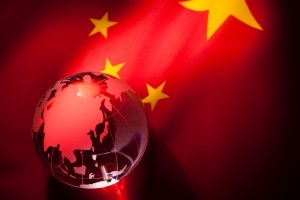By Jacob L. Shapiro
https://geopoliticalfutures.com/the-u-s-retaliates-in-yemen/
Last Sunday, two missiles were launched at U.S. warships, the USS Mason and the USS Ponce, in the Red Sea. On Wednesday, at least three more missiles were fired at the USS Mason. In both cases the missiles failed to hit their targets. Early Thursday morning, the U.S. retaliated by destroying three radar sites in Houthi and Saleh-loyalist areas in Yemen, according to a statement released by the Pentagon. Anonymous U.S. officials told Reuters that the USS Nitze launched the Tomahawk cruise missiles that hit the radar sites. Reuters reported the sites were located in Ras Isa, on the Red Sea coast.
Yemen’s civil war made headlines last weekend when airstrikes hit a funeral hall, killing 140 people and injuring more than 500. Saudi Arabia has not publicly acknowledged its role in that attack, and the White House released a statement afterwards saying that its support of Saudi Arabia’s 18-month-long campaign to defeat the Houthis would be reviewed. It may seem slightly strange that the U.S., just a week after expressing such displeasure with Saudi Arabia, would carry out cruise missile strikes on the very group Saudi Arabia is seeking to destroy. But it is not strange for the U.S. to take offensive action against a potential threat to a key maritime chokepoint in the region.

Last Sunday, two missiles were launched at U.S. warships, the USS Mason and the USS Ponce, in the Red Sea. On Wednesday, at least three more missiles were fired at the USS Mason. In both cases the missiles failed to hit their targets. Early Thursday morning, the U.S. retaliated by destroying three radar sites in Houthi and Saleh-loyalist areas in Yemen, according to a statement released by the Pentagon. Anonymous U.S. officials told Reuters that the USS Nitze launched the Tomahawk cruise missiles that hit the radar sites. Reuters reported the sites were located in Ras Isa, on the Red Sea coast.
Yemen’s civil war made headlines last weekend when airstrikes hit a funeral hall, killing 140 people and injuring more than 500. Saudi Arabia has not publicly acknowledged its role in that attack, and the White House released a statement afterwards saying that its support of Saudi Arabia’s 18-month-long campaign to defeat the Houthis would be reviewed. It may seem slightly strange that the U.S., just a week after expressing such displeasure with Saudi Arabia, would carry out cruise missile strikes on the very group Saudi Arabia is seeking to destroy. But it is not strange for the U.S. to take offensive action against a potential threat to a key maritime chokepoint in the region.




 (2003).
(2003).

